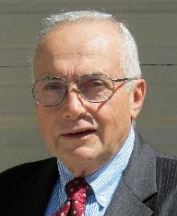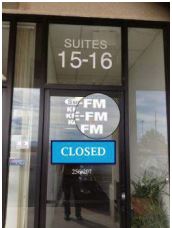Public Alerting in a Post Main Studio Era

[July 2017] Broadcasters are almost unanimous in pleased expectation about the proposal to change or eliminate the Main Studio rule.
With Public Information Files on (or will be on) the Internet, a question is raised about how the public will be able to interact with local stations – especially during times of disaster and emergencies. Richard Rudman considers the matter.
Is the Main Studio Rule nothing more than a relic from another age, a requirement on broadcasters that is unnecessary? Or will the FCC’s plans for 73.1125 make it harder to alert local listeners/viewers to emergency situations?
The Original Basis For the Legal Main Studio File
One of the reasons given for the existence of the Legal Main Studio requirements was to have local broadcasters air timely and useful Emergency Public Information (EPI) directed to people at risk from natural and human-caused emergencies.
The aim of delivering EPI to the public is to give the public protective action information to best protect their lives and property. Two examples of protective actions given in public warnings are “Evacuate Immediately” and “Shelter in Place”.
The Role of EPI
The assumption that has taken hold over time is that EPI is best delivered to the public if the originators of this information are the professionals who are in charge of managing the emergency, and the role of broadcasting and other means is to relay that authoritative EPI to the public.
Using two examples, the logic behind this becomes clear.
The public must know under what conditions to evacuate immediately – where to go, what route or routes to take, what to take with them, and what to do when they get to the evacuation point.
For shelter in place, the public needs to know what steps to take for the event that requires this measure. For toxic plumes, the public must be told what they need to do to seal their shelters.

However, if stations are no longer manned at such times, how will the lifesaving information get out?
Social Research on EPI
A great deal of serious social research has been accumulated in the years since the requirements in 47 CFR 73.1125 were published. These are archived at the Center for Disaster and Risk Analysis (CDRA) at the Colorado State University.
Drawing on this research, the Partnership for Public Warning, Inc. (PPW) wrote a series or reports for the FCC, FEMA, and the National Weather Service after September 11, 2001 with the goal of making suggestions for a unified alert and warning strategy for the United States.
The PPW reports are archived at the Bridge Multimedia site.
FEMA IPAWS
The best-known result of the PPW reports has been realized in the Federal Emergency Management Agency’s (FEMA) Integrated Public Alert and Warning System (IPAWS).
IPAWS messaging is well on its way to become the standard for how local, state and national warning messages are delivered to the public.
Nothing in that archived research or in the archived PPW reports sees any benefit to having non-emergency and/or law enforcement personnel acting as the source for EPI, or the major subset of EPI, emergency public warnings.
The NWS Mission
The National Weather Service (NWS) was created to warn the public about weather-related emergencies and is fully integrated into the Emergency Alert System (EAS).
NWS information works in concert with information from professional law enforcement and emergency management personnel to deliver accurate and authoritative information to the public using the EAS.
What Has Changed
As we all know, very few broadcasters still have staffs on duty to provide real time local news coverage during emergencies.
With or without a legal Main Studio requirement the public now depends on warning and follow-on information from law enforcement, emergency management and the National Weather Service.
These warning originators are gradually implementing IPAWS delivery of messages over WEA, EAS, and social media that can provide more detailed and incident-specific information to help the public do or not do what they need to protect themselves.
Conclusion
If the Commission reaches the predicted decision that legal Main Studios are no longer needed, the key will be having stations now subject to the legal Main Studio rules of the Commission act in full compliance with the FCC’s Emergency Alert System (EAS) rules.
If so, they will be fully capable of relaying emergency public warnings to the public.
Current EAS rules require that each EAS Participant’s stations must be connected to local National Weather Service and local government warning originators. This is best accomplished by locating all EAS equipment at transmitter sites that are already located to reach their respective communities for which they are licensed.
– – –
Richard A. Rudman has been active in the EAS field for 40 years. He is Vice Chair, California State Emergency Communications Committee (SECC), 1990-present, Core Member, Broadcast Warning Working Group (BWWG), Founding Trustee, Partnership For Public Warning, 2001-2003, Chair, Telecommunications Advisory Group, The Emergency Preparedness Commission for County and City of Los Angeles, 1990-2002, and Chair, Los Angeles County Local Emergency Communications Committee, 1996-2002. You can reach Richard at: rar01@mac.com
